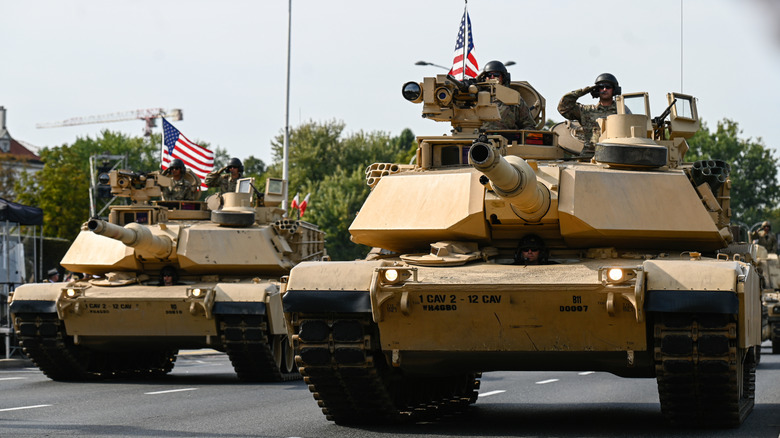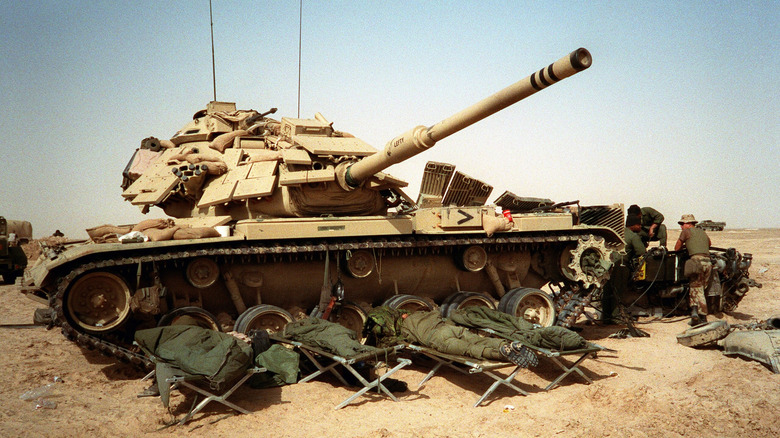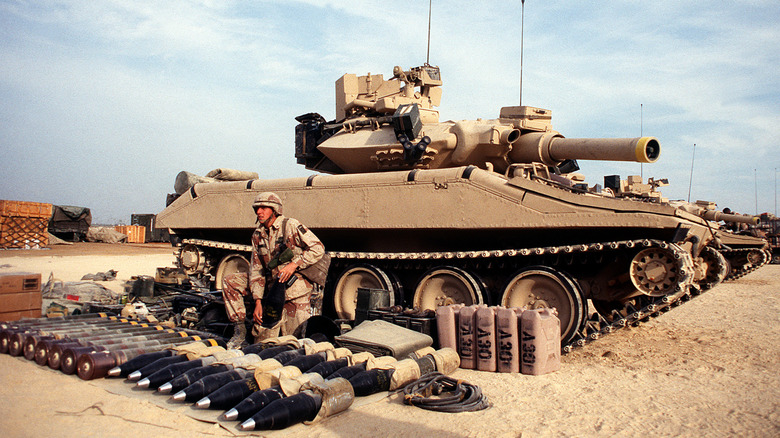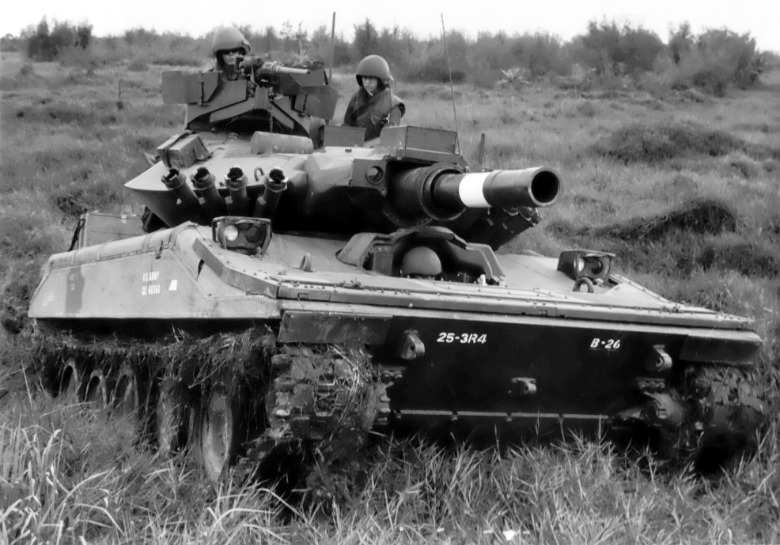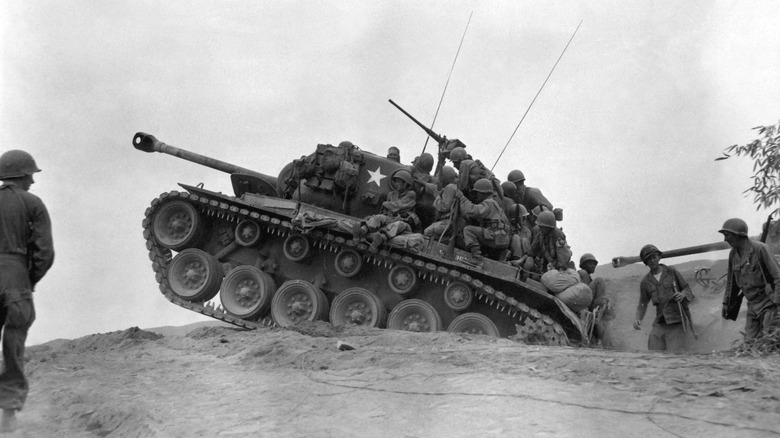Which Tanks Did The US Use Before The M1 Abrams?
For decades, the M1 Abrams has reigned supreme as an enduring symbol of American military might, and a benchmark for main battle tanks worldwide. Born from the need for a highly mobile and powerful armored platform, the M1 Abrams first entered service in 1980 with the U.S. Army, and has consistently been upgraded to meet the ever-changing demands of modern warfare.
Built by General Dynamics Land Systems, this battle tank is named after General Creighton Abrams — a highly decorated tank commander, and chief of staff of the U.S. Army from 1972 to 1974. The M1 Abrams is essentially a heavily armored vehicle built around formidable firepower that includes a 120mm Smooth Bore cannon, a 7.62mm M240 coaxial machine gun, and a .50-caliber M2 machine gun.
The M1 Abrams is a veteran of many conflicts, fully deserving of its status as a military icon. However, before it stormed onto the scene, the U.S. had other battle tanks it actively waged war with or used as a deterrence force. There was the M60 Patton, a mainstay of the Cold War era. Even earlier, the U.S. fielded armored tanks like the M26 Pershing and M551 Sheridan in the Korean War and the Vietnam War, respectively. The tanks played crucial roles in these conflicts, helping shape the evolution of armored warfare and ultimately paving the way for the development of the M1 Abrams.
M60 Patton
The M60, first introduced in 1959, was developed in response to Russia's T-54 — a battle tank that seemed to have the edge over America's M48 armored tank, especially the early variants. The M60 boasted better firepower, armored protection, and improved range over its predecessor. Even more critically, it served as a vital deterrence against the threat of Russian T-54s during the peak of the Cold War.
Its principal weapon was a British-designed 105mm M68 rifled gun that could fire a variety of armor-piercing or high-explosive anti-tank rounds. In addition to the primary weapon, the M60 also packed a 7.62mm machine gun, and a .50-caliber machine gun. Although the M60 first saw combat with the Israelis in the 1973 Yom Kippur War, it later served as America's main battle tank during the First Gulf War, where M60A1 tanks operated by the U.S. Marines demonstrated their effectiveness against Iraqi armor, including Russian-made T-72 tanks.
In 1997, America retired all M60 units from front-line combat duties in favor of the M1 Abrams. However, it continues to be one of the most popular battle tanks in use today, with upgraded variants still operated by countries like Israel, Egypt, Jordan, Argentina, and Brazil.
M551 Sheridan
At approximately 15 tons (15,120 kg), the M551 Sheridan weighed less than a third of the M1 Abrams. Designated as a light tank, the M551 Sheridan's mass allowed it to be air-dropped by parachute or driven across rivers as an amphibious vehicle.
The M551 Sheridan might have been lightweight, but it packed a ferocious punch. One of its most notable features was an M81 152mm gun and missile system, capable of lobbing shells at short-range targets, or engaging threats at longer distances up to three kilometers (1.9 miles) away with MGM-51 anti-tank missiles. The main weapon was supported by a secondary system of one .30-caliber M73/219 machine gun and one Browning M2 .50-caliber machine gun.
The M551 Sheridan saw extensive service during the Vietnam War, where it was used in support of troops on a variety of missions. Unfortunately, keeping the Sheridan light meant compromises in terms of the effectiveness of its armor — a flaw that was ruthlessly exploited by enemy forces with mines and rocket-propelled grenades (RPGs). The Sheridan was deployed on a smaller scale in Panama and the Persian Gulf before it was retired in 1996 without a direct replacement.
M26 Pershing
Named after General John J. Pershing — who commanded the American Expeditionary Force in Europe during World War I — the M26 Pershing's development was triggered by the emergence of the German Tiger II and Panther heavy tanks on the battlefield. These were heavy armored vehicles that, on even footing, proved to be more than a match for the smaller American M4 Sherman tanks.
The M26 Pershing had a combat weight of about 42 tons (41, 892 kg), compared to around 30 tons (30,300 kg) for the World War II-era M4 Sherman. It was manned by a crew of five that included the driver, two gunners, a loader, and the tank commander. The tank was fitted with a 90mm M3 main gun, supported by two 7.62mm Browning machine guns and a 12.7mm Browning heavy machine gun, effective against soft-armored vehicles and even low-flying aircraft.
It was not until 1945 that the first M26 Pershing tanks rolled onto the combat theatres in Europe, by which time the outcome of the war was pretty much determined. However, the heavy tanks were used extensively during the early years of the Korean War, where they faced off against Russian-made T-34/85 tanks belonging to the North Korean army.
